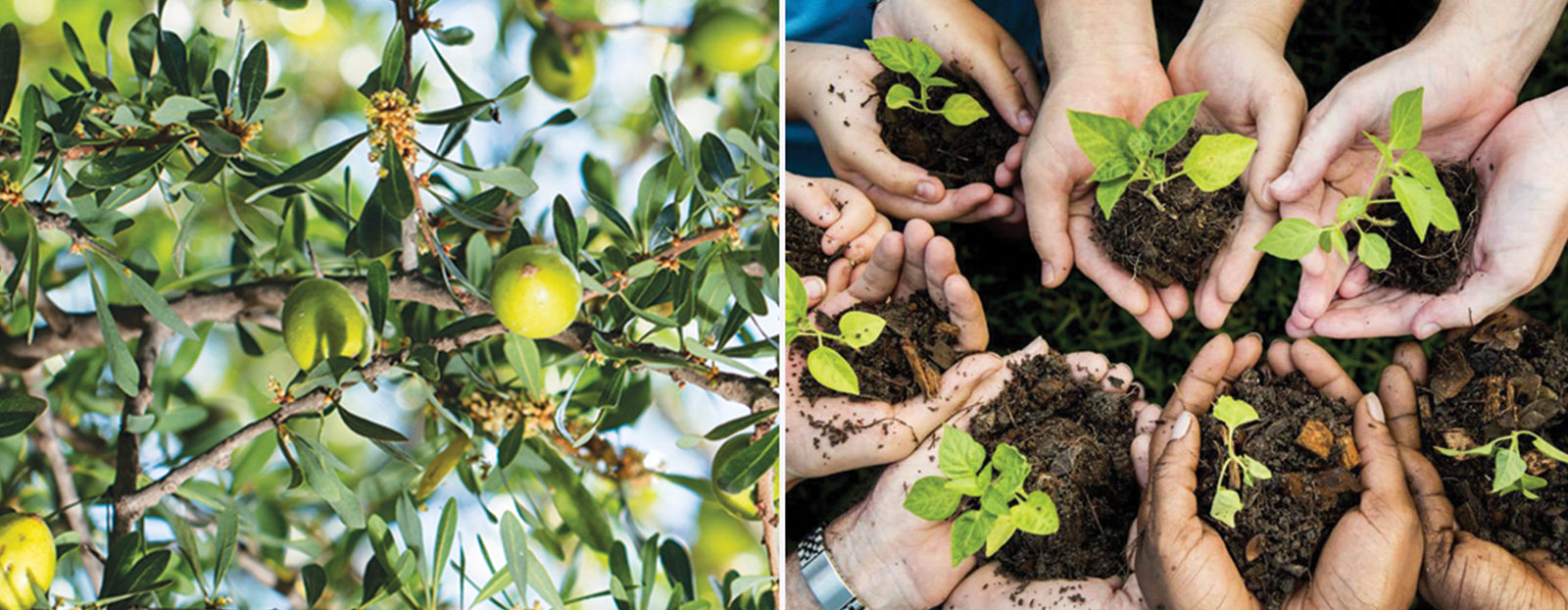
FREE FULL SIZE HAIR REPAIR SERUM ($49 VALUE!)
ON ALL ORDERS $99+ AFTER DISCOUNT
ON ALL ORDERS $99+ AFTER DISCOUNT
40% OFF SITEWIDE Use code BF40 Ends in
SHOP NOW
FREE FULL SIZE HAIR REPAIR SERUM ($49 VALUE!)
ON ALL ORDERS $99+ AFTER DISCOUNT
ON ALL ORDERS $99+ AFTER DISCOUNT
40% OFF SITEWIDE Use code BF40 Ends in
SHOP NOW
✕
Shop All
The Power of Argan Trees
by Jude Jacob January 31, 2022

FRÉ began with a mission to create excellent skincare products for an active lifestyle and to be a brand that drives social change. With the One Set, One Tree program in partnership with the High Atlas Foundation (HAF), FRÉ plants a tree for every set sold. To date, we have planted 63,000 argan trees in Morocco and will plant an additional 30,000 trees in the coming months. Planting trees protects the planet by fighting deforestation and empowers the women who harvest argan oil.
To date, FRÉ has planted 63,000 argan trees in Morocco and will plant an additional 30,000 trees in the coming months.
Argan as “World Human Heritage”
Argan trees are symbolic and unique desert trees originating in the Souss Massa and Essaouira regions of Morocco. More than 830 thousand hectares of forest are covered by Argan. Their history dates back to between 1500 and 2000 years ago. Argan trees are extremely resilient and can live for 250 years, and some accounts say that certain types of Argan have lived up to five centuries.
Morocco works hard to preserve this ecological heritage. After 1998, UNESCO classified Argan trees as a “Bio Reserve” or “World Human Heritage.” Civil society, foundations, cooperatives and local associations are responsible for working together to promote sustainable environmental development and protecting the argan trees from extinction.
Creating resilient skin with argan
For centuries the Amazigh people of Morocco have harvested oil from the argan tree and used it to treat ailments like heart disease, rheumatism, and have applied it directly to dry skin and hair. Modern botanical science shows that Argan has a rich proportion of potent antioxidants and fatty acids and is one of the world’s most nourishing natural skincare ingredients. At FRÉ, we bring the power of the resilient desert tree to skincare, creating resilient skin.
Planting trees with women’s cooperatives
FRÉ and HAF work together with a number of Moroccan women's cooperatives and communities. The cooperatives plant argan trees, process the argan oil and sell the oil directly to end users. Argan trees not only provide the cooperatives and communities they support with a source of livelihood, but they also improve air quality, helping to protect the planet with each tree planted.
Argan trees not only provide the cooperatives and communities they support with a source of livelihood, but they also improve air quality, helping to protect the planet with each tree planted.
Before the new argan trees reach the cooperatives, they are grown in nurseries. In a greenhouse, argan seeds are placed in water for ten days until the first roots appear. Then, the seeds are planted in trays that are filled with manure. After a month, two-leaf seedlings appear and they are replanted into two-kilogram bags of mixed soil. When the saplings are strong enough, they are moved out of the greenhouse in order to adapt to the Moroccan climate. After a couple of months, these young trees are transplanted into the cooperatives.
HAF works with women’s cooperatives to develop an irrigation system for the new argan trees. In the first 5 years of their lives, argan trees need carefully monitored irrigation. Once the trees are five to six years old, their root system is developed enough that they do not need artificial water management.
It takes ten to fifteen years for the argan trees to bear fruit that can be used to produce the argan oil. The cooperatives know that planting argan trees is a long-term project that will positively impact the lives of future generations. These trees will provide a livelihood and clean air for many years to come.
Leave a comment
Comments will be approved before showing up.


